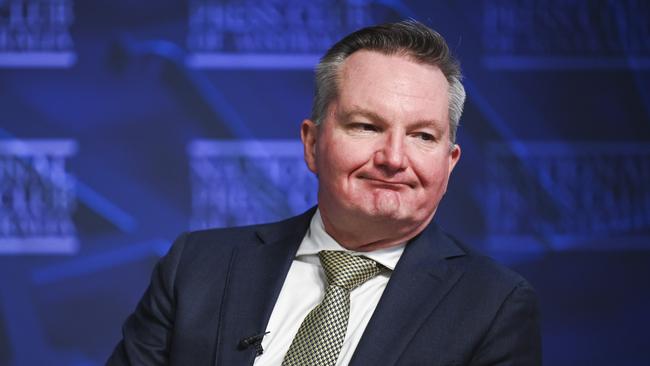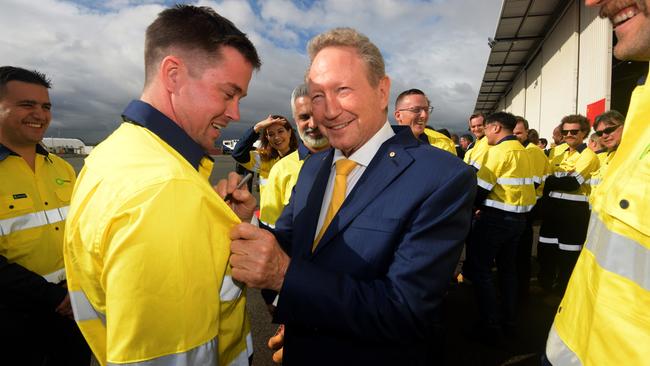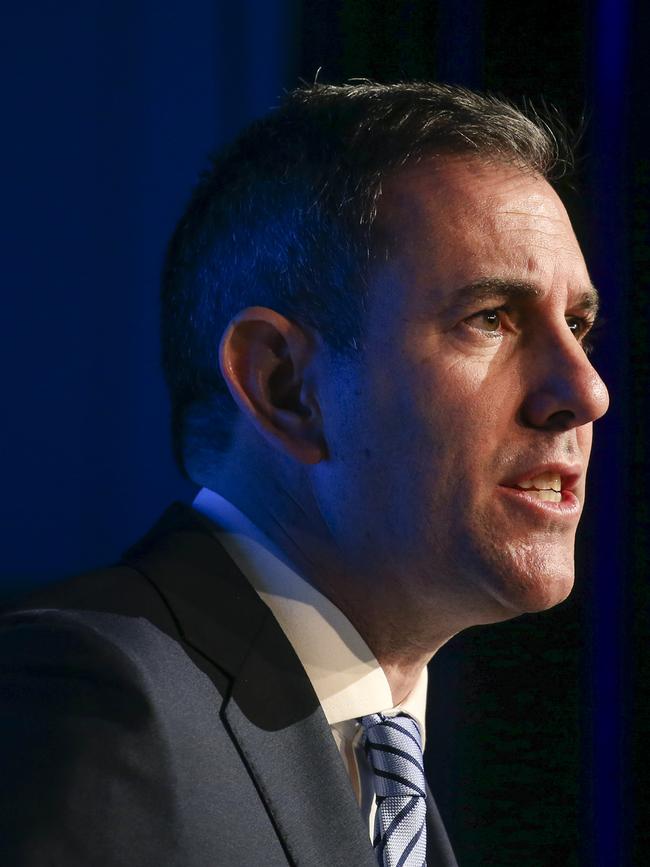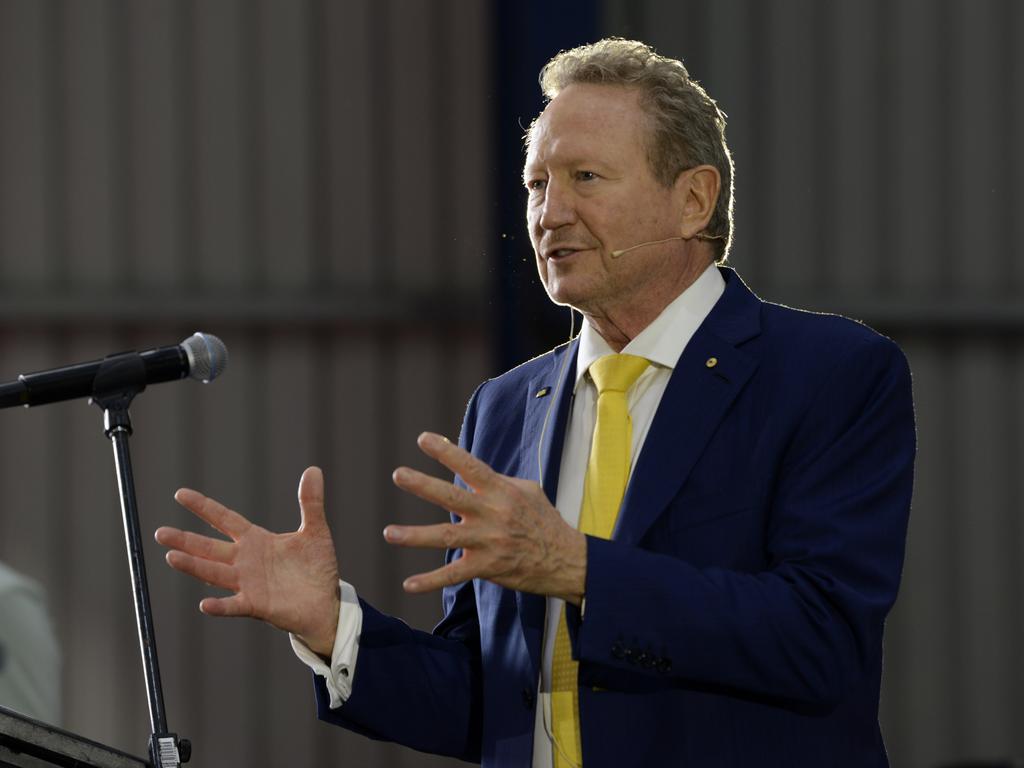Chris Bowen lost in a Forrest of green energy hubris


At lunchtime on Wednesday, Bowen told the National Press Club the green hydrogen transition was progressing “at pace”, putting Australia on track to become a renewable energy superpower by the end of the decade. Less than three hours later, Forrest’s Fortescue Metals told investors it was kicking its target down the road from 2030 to a destination one stop short of Never Never Land. In the meantime, Fortescue will concentrate on what it does best: digging stuff out of the ground instead of building castles in the air.
“Reports of the death of green hydrogen have been greatly exaggerated,” said Bowen. Fortescue may have “de-prioritised” green hydrogen, but $200bn of investment was “in the pipeline”. That’s renewable energy speak for “the cheque is in the mail”.
A Boston Consulting survey, published last September, found that 824 green hydrogen projects with a theoretical capacity of 21 million tonnes a year were in the pipeline in North America and Europe. But only 2 per cent of the announced capacity reached the planning stage, and just 0.2 per cent were completed.
Global energy companies are rethinking the wisdom of pumping billions of dollars of capital into an unproven technology with uncertain timing and no guaranteed rate of return. Statkraft, the Norwegian hydro-electricity giant, rolled back its plans last month. “We have definitely underestimated the challenges,” a company spokesman said. “Developing green hydrogen has become much more expensive than we expected.”
Earlier this year, French energy giant Engie dropped plans to build a green hydrogen plant in Portugal. Only this month, the European Court of Auditors criticised the European Union’s 2030 green hydrogen production target of 10 million tonnes as “overambitious”, saying it was unlikely to be met and, therefore, shouldn’t be included in carbon reduction calculations.
It’s been less than three years since Forrest boasted about spending $1bn to build the world’s largest green hydrogen electrolyser manufacturing plant in Gladstone, Queensland.
Forrest explained his plans to convert the Gibson Island ammonia factory in Brisbane to run on green hydrogen. He also committed to building the world’s first green hydrogen import and export facility at Port Kembla, linked to a power station fired by “the miracle molecule …. clean as the day is long … crystal clean, green hydrogen made right here at home”.
Much nonsense has been spoken at the National Press Club over the years, but seldom have journalists been taken on a flight of fancy quite as crazy as the one piloted by Forrest back in October 2021. “To make green hydrogen, you simply split water,” he said. “Any old water … It can be wastewater, desalinated water, sea water into hydrogen and oxygen using renewable electricity only.

“It’s like a miracle molecule, the Swiss Army knife of energy and green products, versatile and able to decarbonise even the most challenging sectors, like, say, iron ore, cement, steel, iron fertilisers, aeroplanes, trucks, trains, cars.”
We now know all this was pure fantasy. The multibillion-dollar projects he promised were technologically unproven and economically unfeasible. There was barely a dollar of committed finance behind them and only the flimsiest of business cases.
We shouldn’t be surprised. Hydrogen has been breaking hearts since 1766, when Henry Cavendish described the production of “inflammable air” by reacting zinc metal with hydrochloric acid. Try as they might, technologists have never overcome hydrogen’s fatal flaw: whatever hydrogen is asked to do, another technology will do it better, safer and cheaper.
Forrest’s 2021 expectations about the cost of green hydrogen were somewhat wide of the mark. The cost had halved, he claimed, because “unlike fossil fuels, green hydrogen was becoming cheaper and would never run out”.
Last week he told Nine Radio in Perth: “We just have to work out now how to produce it cheaply enough.” The collapse of the green hydrogen bubble is a double blow for Bowen.
Green hydrogen manufacturing and the proposed Sun Cable solar development were supposed to provide the portable energy that would turn Australia into a renewable energy export power by the end of the decade. Neither project is going to happen, certainly not by 2030. The collapse of the business case for green hydrogen puts the lie to Bowen’s claim that renewable energy is cheap.
Hours before the Fortescue announcement, he was repeating his trite line at the National Press Club. Yet even Bowen’s cheer squad now doubts the claim, if it is not ready to abandon all of the hopes for a renewable future. Green hydrogen still had a great future, an opinion article in Renew Economy claimed. It’s just there was “limited access to the large amounts of low-cost renewable energy”. Quite.
Many of us have been making that point for some time. The lesson for Bowen from the green hydrogen debacle is that he should stop clogging his diary with carpet-bagging time-wasters and stick with the technology that actually exists. Bowen will never get back the hours he’s spent listening to the green hydrogen salesmen peddling miracle cures for the planet, just as taxpayers are unlikely to see a return on the billions of dollars of poorly scoped subsidies pushed their way.

Yet Bowen is part of a government that believes it understands capital allocation better than the markets. Its Treasurer has fallen for the neo-Marxist fantasy of values-based capitalism and the delusion that innovation should be driven by the state.
It has a Finance Minister who lacks the wisdom to ask tough questions and a Prime Minister content to leave the details to others. Labor will respond to Fortescue’s misadventures by throwing more money into its Hydrogen Headstart program and associated corporate welfare schemes designed to bridge the gap between the cost of manufacturing green hydrogen and the amount customers are willing to pay.
Australia will be caught up in the global sugar war, competing with governments in Europe and North America to pile more sugar on the table. However, it will not have the advantage of cheap energy enjoyed by countries blessed with abundant hydro-electricity or in which nuclear power is legal.
Politicians and entrepreneurs may be equally prone to the cognitive biases that allow bad ideas to hang around long after they should’ve been dismissed. The redeeming grace of entrepreneurs is the profit motive, which tells them when to stop throwing good money after bad.
Nick Cater is a senior fellow at Menzies Research Centre and a visiting fellow at the Danube Institute.






Energy Minister Chris Bowen was remarkably sanguine last week about the implosion of Andrew Forrest’s plan to produce 15 million tonnes of green hydrogen annually by 2030.